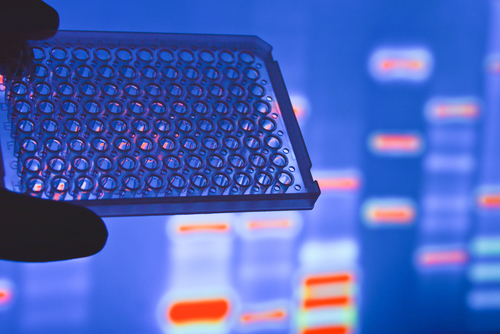Endometrioma biopsies show altered levels of microRNAs — the small RNA molecules capable of regulating gene expression — compared with normal endometrium samples, a study reports.
Further studies are required to understand how the levels of microRNAs, especially those that showed the biggest changes — microRNA-139-5p and microRNA-375 — correlate with disease progression.
The study, “Differentially-Expressed miRNAs in Ectopic Stromal Cells Contribute to Endometriosis Development: The Plausible Role of miR-139-5p and miR-375,” was published in the International Journal of Molecular Sciences.
The treatments available for endometriosis, such as estrogen and progestin hormone therapy, are mainly to relieve pain. Currently lacking are therapies to target specific molecular pathways that are altered in endometriosis.
Among the molecular alterations detected in endometrial lesions is a group of small regulatory molecules, called microRNAs. These microRNAs are a special class of short RNA molecules capable of regulating gene expression, or protein production. A single microRNA can regulate the expression of more than 100 genes.
Although increasing evidence suggests that microRNAs can help halt disease progression, while others may actually promote endometriosis, few studies have profiled microRNAs in different endometrial tissues.
Therefore, a group of researchers performed an RNA sequencing analysis to map all the RNA molecules, including microRNAs, in stroma cells (connective tissue) of the endometrium. They took four samples each from biopsies of eutopic (at the correct place) endometrium, and endometrioma, a cystic mass arising from ectopic, or misplaced, endometrial tissue within the ovary.
The RNA sequencing analysis identified a total of 719 miRNAs in the eutopic samples, and 637 miRNAs in the endometrioma samples. The analysis revealed that 149 miRNAs were abnormally expressed in the endometrioma — specifically, the levels of 78 microRNAs was increased, while the other 71 had reduced expression compared with the eutopic endometrium.
Two microRNAs — microRNA-139-5p and microRNA-375 — showed the most significant deregulation, with the levels of microRNA-139-5p being the highest, and the microRNA-375 the lowest compared with the control samples (eutopic endometrium).
The expression of both microRNAs — higher for microRNA-139-5p and lower for microRNA-375 — in the ectopic endometrium was further confirmed by a more sensitive technique called quantitative real-time PCR.
A computational analysis of the factors that may potentially regulate the altered microRNAs identified, for example, the estrogen receptor alpha, the production of which is informed by the ESR1 gene.
“Although there are contradicting results regarding ESR1 expression in ectopic endometrium, in particular ovarian endometriosis, it is widely accepted that the ESR1 gene has a pivotal role in endometriosis pathogenesis [disease development],” the researchers wrote.
Low levels of microRNA-375 have also been reported in previous studies using both whole eutopic and ectopic tissues, they added. While its function remains unknown, one of the potential targets of microRNA-375 is the EDN1 gene, whose expression is reported to be higher in stromal cells of ectopic origin than those from the eutopic endometrium.
This study “revealed remarkable differences in miRNA expression patterns between stromal cells isolated from the endometrium and endometriomas,” the researchers wrote. “The current results provide evidence that further studies are needed to learn about the interactions within and between all cell populations of endometriotic lesions and to uncover the exact molecular mechanisms behind the disease pathogenesis.”

